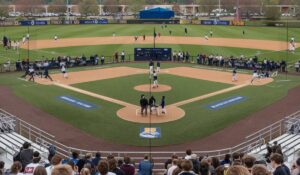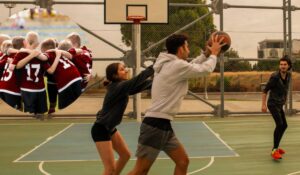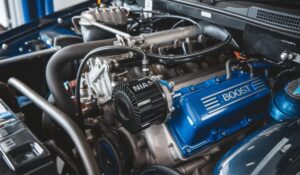Is the Pace Academy field grass or turf? Whether you’re a student, a parent, or just a sports fan, knowing the type of field can make a big difference in how the game is played and enjoyed. Let’s dive into what makes a field great and what kind of surface Pace Academy uses for its games!
What is the pace academy field grass or turf?
Pace Academy is a private school located in Atlanta, Georgia. Known for its strong academic programs and athletic teams, the school has a fantastic sports facility. One of the most important parts of any sports facility is the playing field. The type of surface on the field can affect how games are played, how athletes perform, and even how injuries are prevented.
Understanding Field Surfaces: Grass vs. Turf
Before we get into the specifics of the Pace Academy field, let’s break down the two main types of playing surfaces: grass and turf.
Grass Fields
- Natural Look and Feel: Grass fields are made of natural grass, which gives a soft and natural playing surface. They can be very pleasant to play on, especially in good weather.
- Maintenance: Grass fields require a lot of maintenance. They need regular mowing, watering, and fertilizing to stay in good shape. In bad weather, like heavy rain, grass fields can become muddy and difficult to play on.
- Gameplay: Grass fields can provide a variable playing surface. They might be soft and bouncy in some areas and hard in others. This can affect how the ball rolls and how players move.
- Environmental Impact: Grass fields are natural and can be good for the environment. They help reduce heat and provide a habitat for wildlife.
Turf Fields
- Artificial Surface: Turf fields use synthetic materials that mimic the look and feel of natural grass. They are made from various types of plastic fibers and can look very realistic.
- Low Maintenance: Turf fields are much easier to maintain than grass fields. They don’t need watering, mowing, or fertilizing. This makes them a popular choice for areas with lots of use or where it’s hard to keep natural grass healthy.
- Gameplay: Turf fields offer a consistent playing surface. The ball rolls and bounces predictably, which can be great for fast-paced games. However, turf can get very hot in the sun and might be harder on players’ joints compared to grass.
- Environmental Impact: Turf fields can have environmental concerns. They are made from synthetic materials and can heat up more than natural grass, which might affect the surrounding area.
What Type of Field Does Pace Academy Use?
Now, let’s get to the heart of the matter: What type of field does Pace Academy use for its sports activities?
Pace Academy has opted for a turf field. Here’s why they might have made this choice:
- Durability and Consistency: Turf fields are highly durable and provide a consistent playing surface throughout the year. This means that games and practices can happen regardless of weather conditions. For a busy school like Pace Academy, this is a huge advantage.
- Maintenance: With a turf field, Pace Academy doesn’t have to worry about the extensive upkeep that a natural grass field requires. This helps the school save time and resources.
- Performance: Turf fields can enhance the performance of players by providing a stable surface. It can also allow for more frequent use without the wear and tear that natural grass fields might suffer from.
- Weather Conditions: Atlanta can experience a lot of rain, and turf fields are less affected by wet weather compared to grass fields. This means that sports activities can continue even after heavy rainfall.
Pros and Cons of Turf at Pace Academy

Just like any choice, using a turf field has its pros and cons. Here’s a quick rundown of what Pace Academy might experience:
Pros:
- All-Weather Play: Turf fields can handle various weather conditions, including rain and extreme heat. This ensures that sports events and practices can continue smoothly.
- Low Maintenance: Less time and money go into maintaining a turf field compared to a natural grass field.
- Consistent Surface: Players benefit from a uniform surface that doesn’t change with the weather. This can improve the quality of the game.
- Increased Usage: The field can handle a lot of use without getting damaged, making it perfect for a busy sports schedule.
Cons:
- Heat: Turf fields can become very hot in the summer sun. This can be uncomfortable for players and might even lead to heat-related issues.
- Injury Risk: Some studies suggest that turf fields can lead to different types of injuries compared to grass fields, including joint problems and abrasions.
- Environmental Impact: Turf is made from synthetic materials and can contribute to heat buildup in the surrounding area. Additionally, turf fields have a limited lifespan and need to be replaced eventually.
- Cost of Replacement: While maintenance costs are lower, replacing a turf field can be quite expensive. The field has a lifespan of around 8 to 10 years before it needs replacing.
How Does Turf Affect Athletes?
Turf fields can impact athletes in several ways:
- Performance: Athletes often find that turf fields offer a faster, more predictable playing surface. This can benefit certain sports that rely on speed and precision.
- Injury Prevention: While turf can be easier on the joints compared to hard surfaces like asphalt, it might not absorb impacts as well as natural grass. This could potentially lead to more surface-related injuries.
- Training: Turf fields can provide consistent conditions for training, which helps athletes practice under uniform conditions.
Conclusion
So, is the Pace Academy field grass or turf? Pace Academy uses a turf field for its sports activities. This choice offers many advantages, including durability, low maintenance, and the ability to handle various weather conditions. However, it also comes with some considerations, such as heat and potential environmental impact.
Understanding the type of field can give you insights into how games are played and how athletes perform. Whether you’re a player, a fan, or just curious, knowing about the field’s surface can enhance your appreciation of the sport.
If you ever get the chance to visit Pace Academy, you’ll see firsthand the benefits of playing on a modern turf field. Enjoy the games and the great facilities that help make sports at Pace Academy so exciting!
FAQ
1. What type of field does Pace Academy use?
Pace Academy uses a turf field for its sports activities.
2. Why did Pace Academy choose a turf field?
Pace Academy chose a turf field for its durability, low maintenance, and ability to handle various weather conditions.
3. What are the benefits of a turf field?
Turf fields offer a consistent playing surface, require less maintenance, and can handle all kinds of weather. They also support frequent use without damage.
4. Are there any downsides to using a turf field?
Yes, turf fields can become very hot in the sun, may lead to different types of injuries, and have an environmental impact. They also need to be replaced after several years.
5. How does a turf field affect athletes?
Turf fields provide a predictable surface that can enhance performance but may also pose different injury risks compared to natural grass.
6. How long does a turf field last?
A turf field typically lasts about 8 to 10 years before it needs replacement.









































